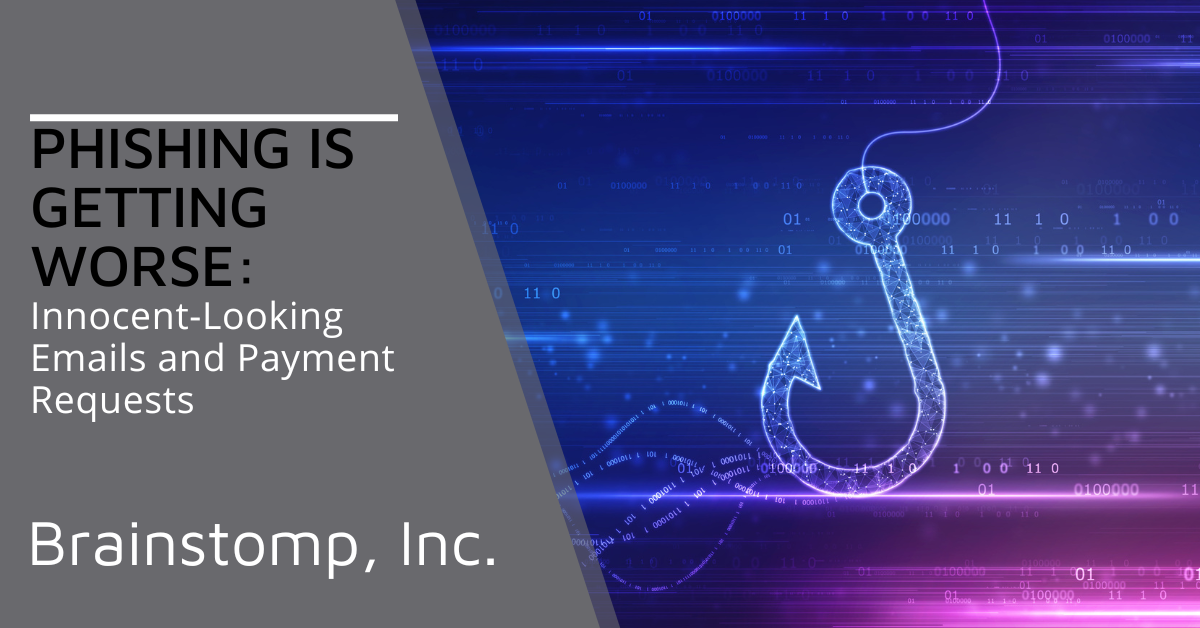Watch Out For These Scam Emails with QR Codes
/In the rapidly evolving landscape of digital communication, the prevalence of scams and cyber threats has reached unprecedented levels. One of the latest and most insidious tactics employed by cybercriminals is the use of scam emails with QR codes.
In this comprehensive post, we embark on an in-depth exploration of this nefarious scheme, focusing primarily on a real-life example involving the global tech giant, Microsoft. By delving into the intricacies of these scams, we aim to arm you with a thorough understanding of the dangers they pose and the measures you can take to protect yourself.
The Shifting Landscape of Cybercrime
The digital age has seen a remarkable transformation in the world of cybercrime. Gone are the days when scammers relied solely on poorly crafted phishing emails laden with suspicious links and attachments.
Today's cybercriminals have honed their skills, and their tactics have evolved to exploit the technology at our fingertips. A prime example of this evolution is the use of QR codes in scam emails, a method that leverages human psychology to deceive even the most cautious recipients.
Anatomy of a Scam Email: Deciphering the Deception
Scam emails with QR codes are like modern-day riddles, designed to trick their recipients into taking unwanted actions. They often bear the branding and logos of well-established companies, a deliberate choice made to lull victims into a false sense of security. To understand the structure and mechanics of these scams, let's dissect a typical scam email:
1. Sense of Urgency: The Psychological Trigger
Scam emails are masters of manipulation, often creating a sense of urgency that compels the recipient to act immediately. For example, they might claim that your account will be suspended unless you take swift action.
2. Impersonation of Reputable Brands: The Art of Disguise
Cybercriminals exploit the trust people place in well-known brands such as Microsoft, Google, or Apple. They meticulously craft their emails to convincingly impersonate these giants, making it exceedingly difficult for recipients to doubt the legitimacy of the message.
3. Misleading Subject Lines: The Hook
To ensure their emails are opened, scam artists employ enticing subject lines that grab the recipient's attention. This is a classic ploy to ensure that the recipient engages with the message.
4. QR Code Integration: The Heart of the Scam
At the center of these fraudulent emails lies the QR code. This seemingly innocuous square, when scanned, unleashes a chain of events that can compromise your device and, potentially, your personal information. It's this QR code that we will explore further, using the real-life example involving Microsoft as a case study.
Real-Life Example: The Microsoft 2FA Scam
To underscore the seriousness of scams involving QR codes, let's delve into a genuine case where cybercriminals impersonate Microsoft.
The Bait: Setting the Trap
In this scenario, the scam email purports to be from Microsoft, informing the recipient that their two-factor authentication (2FA) access is set to expire imminently. The message asserts that, to retain their 2FA access, the recipient must scan the QR code provided within a tight 72-hour window.
To add authenticity, the email prominently displays the Microsoft logo and employs professional language to convey urgency and importance.
The Deception: How the Trap Springs
The urgency conveyed in the message, combined with the trust associated with Microsoft, often compels the recipient to scan the QR code without second-guessing. The mere act of scanning the code, something that seems innocuous, can, in reality, give cybercriminals access to your device and potentially sensitive information.
The Consequences: Unraveling the Aftermath
The consequences of falling victim to such a scam can be dire. Scanning the QR code can lead to the installation of malware on your device, unauthorized access to your personal information, or even the theft of your financial data. With this stolen information, cybercriminals can engage in various illicit activities, from identity theft to financial fraud, causing significant harm to victims.
Protecting Yourself from Scam Emails with QR Codes: A Comprehensive Guide
Given the cunning nature of these scams, it is crucial to be proactive in safeguarding yourself against such malicious schemes. Here is a detailed guide on the measures you can take:
1. Verify the Sender: The Importance of Due Diligence
Always scrutinize the sender's email address. Legitimate companies employ domain-specific email addresses, and these can usually be found on their official websites. When in doubt, contact the company directly using their verified contact information.
2. Question Urgency: Resist Hasty Decisions
Be cautious of emails that pressure you into taking immediate action. Cybercriminals use urgency as a tactic to prevent recipients from carefully considering the email's authenticity. Take your time to verify before taking any action.
3. Double-Check URLs: A Vital Precaution
Hover your mouse over any links provided in the email, but refrain from clicking on them. Doing so will reveal the actual destination URL. Ensure that it matches the official website of the company in question.
4. Cross-Reference Information: Seek Independent Verification
Search online for any announcements or news pertaining to the content of the email. Reputable companies often post alerts about ongoing scams involving their brand.
5. Use QR Code Scanners Wisely: A Prudent Approach
If you find yourself in a situation where you must scan a QR code, ensure that it is from a trusted source. Avoid scanning codes received in random emails or from unknown sources.
6. Invest in Antivirus and Anti-Malware Software: The Last Line of Defense
High-quality antivirus and anti-malware software can detect and prevent threats from executing on your device. Regularly update these tools to ensure they are equipped to tackle the latest threats.
Empower Yourself in the Digital Age
In a world where online threats are a constant reality, knowledge is your most potent defense. Scam emails with QR codes, exemplified by the Microsoft 2FA scam, highlight the significance of staying informed and vigilant. By following the steps outlined in this comprehensive guide, you can significantly reduce the risk of falling victim to these deceptive tactics.
At BrainStomp, we are deeply committed to raising awareness about cybersecurity and providing you with the resources necessary to ensure your safety in the digital realm. If you have any questions, need further guidance, or want to discuss any aspect of online security, please do not hesitate to contact us. Your safety is our utmost priority, and together, we can work towards creating a more secure digital world.












